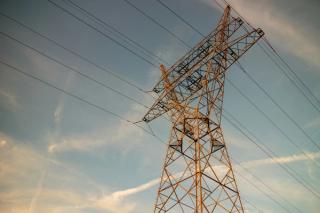
Understanding the new Decarbonisation Readiness requirements (UK)
- Post Date
- 25 October 2023
- Read Time
- 7 minutes

Carbon Capture Readiness (CCR) requirements were first introduced in 2009 for new build combustion power plants sized over 300MW in England and Wales. Since then, the energy landscape has changed significantly with an evolution of carbon capture and decarbonisation technologies.
With commitments to the sixth Carbon Budget and the UK Government’s pledge to decarbonise the power system by 2035, the proposals to change CCR to Decarbonisation Readiness (DR) aims to set a clearer direction and pathway for the decarbonisation of high carbon combustion power plants and to minimise the risk of these power plants from becoming ‘stranded assets’ i.e., prematurely unable to operate economically because those plants were not adequately prepared for decarbonisation.
The scope of plants that would need to demonstrate they are Decarbonisation Ready as part of their permitting process would be significantly expanded by the proposed changes, therefore it is important for all thermal power plant developers (including those working in bioenergy) to be aware of proposed DR requirements.
The scope of DR (changes to the current CCR) would apply to England only. These requirements are to come into force on 1 July 2024.
The aim of the Decarbonisation Readiness requirements is to achieve a complete or near complete CO2 emissions reduction from a power plant, relative to that plant being unabated. This would mean either:
- the installation and continued operation of 100% hydrogen-firing generation; or
- the installation and continued operation of a minimum 90% capture rate Carbon Capture, Utilisation and Storage (CCUS) technology of facility CO2 emissions, or the capture rate defined in best available techniques (BAT) guidance where applicable, whichever is higher.
If successful, more combustion plants would be retrofitted to run on low-carbon technology; where retrofitting is not possible, a decrease in new high-carbon projects can be expected. The UK Government has made the following proposals to demonstrate and achieve decarbonisation:
- Complete removal of the current 300 MW minimum capacity threshold for combustion power plants - DR requirements through an environmental permit would apply to all combustion power plant that are currently subject to new build and substantially refurbished combustion power plant to address ‘market distortions’, with some exceptions such as plants which only produce heat, burn landfill gas or are used for back-up and testing for no more than 50 hours per year. Combustion plants would also be exempt if they already have CCUS fitted or have already been converted to hydrogen.
- Moving the DR requirements from the planning consent process to the Environmental Permitting Regulations 2016.
- Expanding the scope of DR - Following the call for evidence, the government proposes to include combustion energy from waste (EfW) plants in the DR requirements which already require an environmental permit. They expect EfW will represent a large proportion of residual emissions from the power sector in the 2030s. However, they propose to exclude small waste incineration plants and plants burning landfill gas from DR even if they are required to have an environmental permit. Combined heat and power plants (CHP) which already require an environmental permit in DR have been proposed by the government to be included. They propose to exclude small waste incineration plants and plants burning landfill gas from DR, even if they are required to have an environmental permit. The Government is also not proposing to include combustion plants which only produce heat, but they may be added at a later date.
- Hydrogen Conversion Readiness (HCR) and a review of Carbon Capture Readiness (CCR) requirements - The Government proposes to enable developers of combustion power plants to comply with DR requirements by demonstrating how their plant could demonstrate CCR and/or HCR. It proposes the following four assessments:
- Plant operators who can decarbonise their plant through CCUS or hydrogen should ensure that sufficient space on or close to the site is planned for. The guidance on space requirements will be underpinned by their technical assessments and will also be part of the guidance developed by the EA.
- Developers must ensure that eligible new build and substantially refurbished combustion power plants are configured in such a way that future technical works to convert to 100% hydrogen firing are as straightforward as possible. The EA will set out a technical checklist as part of the DR permitting guidance they issue.
- Developers must ensure that the site’s location enables access to sufficient supply of hydrogen e.g., transport of hydrogen to the site via pipeline or on-site production and/or storage. It is proposed that this assessment be non-compulsory to ‘pass’ in the interim due to the limited hydrogen supply and production infrastructure in the UK.
- Developers will be required to undertake an economic feasibility assessment to determine whether they will be able to decarbonise their combustion power plants taking into account equipment costs and return on investment from the avoided carbon costs. While this will eventually be required of developers to demonstrate, it will not be necessary to ‘pass’ the assessment initially.
- The transport and storage (T&S) test to demonstrate CCR requirements has been proposed to remain mandatory. The Government does not intend to make provisions in the legislation or guidance for the usage of CO2 at this stage.
- Regular reviews of the plant’s compliance with DR requirements - The Government is planning to retain the current CCR regulatory requirements where developers submit a review report every two years until the developer retrofits carbon capture technology to their plant. The Government also proposes to remove the three-month report, meaning that the first report would be due in 2 years from when the plant was put in operation. At present, if a review indicates a barrier to retrofitting the decarbonisation technology at a plant, this will not be treated as non-compliance with the permit. It will only be considered non-compliance if an action has been taken that had led to the emergence of the barrier, such as the failure to maintain control of the space set aside for carbon capture equipment. This adds flexibility for developers and encourages evolving technologies and solutions, which may emerge in time, and be applicable to more plants.
As an additional requirement, the Government proposes eligible plants that come into operation during or after 2030 should install equipment capable of firing 100% hydrogen or a blend of hydrogen and natural gas. However, they would still be permitted to use 100% natural gas as a fuel. For plants put into operation prior to 1st January 2030, they need to demonstrate they are hydrogen ready as per the technical feasibility test in the four proposed assessments.
In summary, the changes to DR requirements are expected to reduce the number of new build projects, potentially disincentivise plants sized below 300MW and increase administrative and permitting costs for businesses. The magnitude of impact to developers in relation to increased costs, investment decisions, type of technology and machinery used, space availability and site location is still unknown, and the Government welcomes any evidence of this from stakeholders.
Article update 1 of 2: Following the election period, the Environment Agency are expecting the consultation response to be published in the next couple of months, with legislation following after. The DR requirements were previously expected to have been implemented through the Environmental Permit Regulations in July but were delayed due to the election.
The Consultation Response will describe the responses received and set out the government position following. It will also provide a good indication to industry of what the duty will entail. The implementation date will be set at an appropriate time to balance the need to move forward with decarbonisation and for operators to have sufficient time with all the information required before a permit application.
Article update 2 of 2: The outcomes from the consultation were published in October 2024 and the proposed guidance is currently in the consultation phase.

